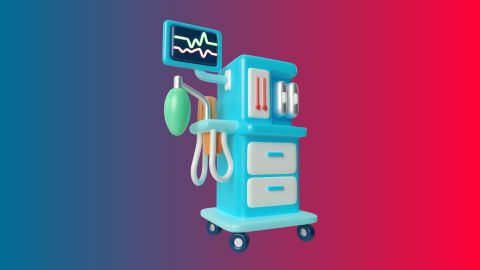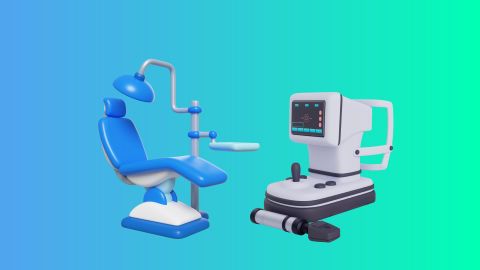Orthopedic instruments are specialised tools used by surgeons to diagnose, treat, and manage musculoskeletal issues. These instruments are essential in procedures involving bones, joints, ligaments, tendons, and muscles.
What are orthopedic instruments?
Orthopedic instruments are special medical equipments made for diagnosing, treating, and managing musculoskeletal conditions. These instruments play a crucial role in orthopedic surgeries, assisting surgeons in procedures involving bones, joints, ligaments, tendons, and muscles. They include tools for cutting, drilling, stabilising fractures, and ensuring precise alignment of bones and implants. Made from high-grade stainless steel or titanium, orthopedic instruments are durable, corrosion-resistant, and capable of withstanding repeated sterilisation. Their use enhances surgical precision, improves patient outcomes, and streamlines orthopedic procedures, making them essential in both general and complex orthopedic treatments.
For healthcare professionals looking to upgrade their medical equipment, financing solutions are available to ease the financial burden.
Uses of orthopedic instruments
Orthopedic instruments serve various purposes in surgical settings:
- Bone Cutting: Instruments like bone saws are used to cut bones during surgery.
- Drilling: Drills and reamers create holes for screws and implants.
- Tissue Handling: Forceps and clamps hold tissues and bones securely.
- Exposure: Retractors hold back tissues to expose the surgical site.
- Stabilisation: Implants such as screws, plates, and rods stabilise bones.
Types of orthopedic instruments
A wide variety of orthopaedic instruments are available today, each serving a specific purpose in examination or surgery. Below are some of the essential tools commonly used in orthopaedic procedures:
- Orthopaedic chisel: Used for cutting and reshaping bone with precision during complex surgeries. These chisels come in various sizes and shapes to suit different surgical needs. Price range (Rs.): 700 to 3,500.
- Orthopaedic retractor: Helps keep the surgical site open by holding incisions and moving tissues like muscles and blood vessels aside. This improves visibility and access during procedures. Price range (Rs.): 3,000 to 15,000.
- Cast saw: A powered tool used to safely remove orthopedic casts. It vibrates in a small arc, cutting hard materials without harming soft tissue. Often paired with a cast spreader. Price range (Rs.): 6,500 to 80,000.
- Orthopaedic drill machine: Used to create holes in bone for screw placement in fracture fixation. Care is needed due to heat and pressure that may affect bone stability. Price range (Rs.): 20,000 to 2,50,000.
Benefits of orthopedic instruments
Utilising specialised orthopedic instruments offers several advantages:
- Enhanced Precision: Allows for accurate surgical procedures and better alignment.
- Improved Patient Outcomes: Reduces complications and promotes quicker recovery.
- Durability: High-quality instruments withstand repeated sterilisation and use.
- Safety: Minimises tissue damage and surgical errors.
- Efficiency: Streamlines surgical procedures, saving time and effort.
Price range of orthopaedic instruments in India
You can now explore a wide range of orthopaedic surgery tools available online, tailored to meet the needs of hospitals, surgical centres, and clinics. From basic examination instruments to advanced surgical tools, these products come with detailed specifications, pricing, user reviews, and images to help you make an informed choice.
Below is an overview of commonly used orthopedic surgery instruments along with their approximate price ranges:
Orthopaedic Surgery Equipment |
Price Range (Rs.) |
Arthroscopic instruments |
95,000 to 8,00,000 |
Spinal instruments |
2,500 to 8,000 |
Knee hammer |
200 to 2,000 |
Orthopaedic forceps |
800 to 7,000 |
Orthopaedic osteotomes |
1,000 to 12,000 |
These tools are essential in various orthopaedic procedures and can be sourced from trusted suppliers online. Always verify the features, certifications, and seller credibility before purchasing.
Key factors to consider when choosing orthopaedic surgical instruments
Selecting the right orthopedic instruments is crucial for successful surgical outcomes. Consider the following factors:
- Quality and Durability: Ensure instruments are made from high-grade materials.
- Compatibility: Check that instruments are compatible with other surgical tools and implants.
- Ergonomics: Choose instruments that are comfortable and easy to handle.
- Sterilisation: Ensure instruments can withstand repeated sterilisation.
- Manufacturer Reputation: Opt for reputable brands known for high-quality surgical instruments.
Financing options to buy orthopedic instruments
Investing in high-quality orthopedic instruments can be financially demanding. This is where financing options like doctor loans come in handy. With multiple repayment options and competitive interest rates, professionals can upgrade their medical equipment with ease. By understanding and opting for tools like Medical Equipment Finance from Bajaj Finance healthcare professionals can acquire the necessary tools without straining their finances. Having said that, before you apply, it's important to evaluate the medical equipment finance eligibility criteria. This will ensure a smoother application process. When planning your repayments, knowing the applicable medical equipment finance interest rate can also help you better estimate the overall cost and manage your finances effectively.




